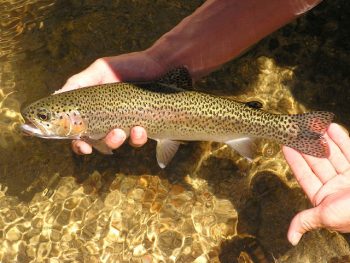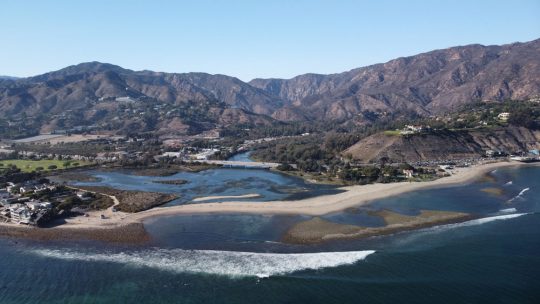Voices of Malibu Creek Watershed: Bernard Yin

Based on an interview between Bernard Yin, Southern California Resident, and Alisan Theodossiou, CalTrout Senior Communications Manager
An important ‘watershed moment’ in Bernard Yin’s life was his move to Southern California from Northern California earlier in his life. Many adjustments were necessary, including how he approached his life-long passion for fly fishing. Bernard recalls, “When I first heard of fishing in Malibu Creek, it had yet to be protected by the regulations that are now in place and ironically. I started out targeting bass and sunfish; hooking trout there was almost considered “bycatch” to me at first. But learning more about the Southern Steelhead trout, my eyes were opened to their legacy, their interesting life cycle, unique native genetics, and the fragile nature of their continued survival. I started seeking out wild SoCal trout populations from then on. Finding wild populations of trout; ocean-running or not in SoCal sort of became my hobby. What was initially for recreation has developed into something deeper for me”.

Photo by Bernard Yin.
Southern California steelhead are indeed a unique fish, and rare too. There’s no denying the precarious decline in their abundance, yet they continue to persist in small numbers throughout their native range along the Southern coast. This is despite sharing their home with more than 22 million Californians- and growing. With more people moving into the Southern California coastal areas, land use has changed significantly─ more houses, more roads, more infrastructure. At one time, the area supported miles of free-flowing river, which serve as aquatic corridors for steelhead to migrate between the ocean and their spawning sites in the headwaters. Today, their range is confined to mostly fragmented, intermittent streams.
To help protect these species, a few Southern California watersheds have been targeted for habitat restoration given their identification as high priority areas for native species recovery according to the National Marine Fisheries Service. With Malibu Creek once serving as a historical steelhead stream, and reports of consistent steelhead runs throughout the years, it has been noted as potentially the most suitable watershed in the Santa Monica Mountains region for steelhead recovery1. Bernard agrees: “Having visited many Southern California trout streams, I see Malibu Creek watershed, with its large, beautiful lagoon and inviting perennial pools, as one of the best candidates for restoration. We’re at a critical time to act to not let this watershed’s incredible diversity fade from existence any more than it already has.”

Photo by Bernard Yin.
Big changes for Malibu Creek watershed have happened and will continue to, such as the restoration of Malibu Lagoon, which Bernard experienced first-hand with his volunteer work, quoting: “It was incredible to witness the lagoon’s recovery.” Malibu Lagoon is 31-acre shallow water estuary that drains Malibu Creek Watershed and serves as important refugia habitat for Southern steelhead. Steelhead smolts spend a considerable amount of time in lagoons and estuaries in order to acclimate to saltwater and have the opportunity to feed before outmigrating.
Restoring the canyon reach of Malibu Creek watershed with the removal of Rindge Dam will also pay off big for Southern steelhead recovery. CalTrout works with a group of state, federal, local, and non-profit stakeholders on removing this 100-ft. dam that was built in the 1920s on Malibu Creek. It’s completely been filled with sediment and blocks steelhead passage to historic spawning grounds. For Bernard, “one of the reasons I became more interested with CalTrout was their restoration and steelhead recovery work in the SoCal region which is often overlooked. Hopefully the watershed restoration work going on by CalTrout and others will reach more people in the community and inspire them to consider how the health of their watershed affects their own health. Trout need clean water, and so do humans. And how cool would it be to brag about having a Southern steelhead run in your own backyard?”
Thank you, Bernard Yin, for talking with us at CalTrout about your fascinations with Southern steelhead and the need to protect them!
1 Dagit, R. and M. Abramson. 2007. Malibu and Arroyo Sequit Creeks Southern Steelhead Monitoring. Prepared for Contract No. P4050012 California Department of Fish and Game. Resource Conservation District of the Santa Monica Mountains, Agoura Hills, CA.





